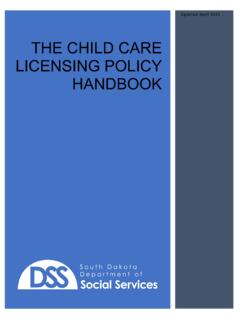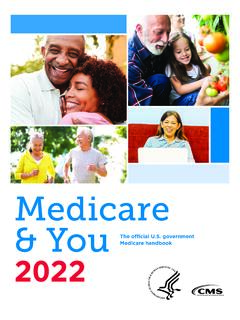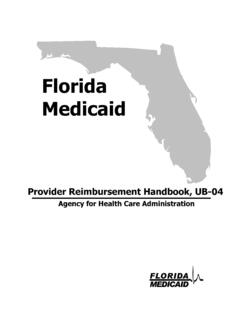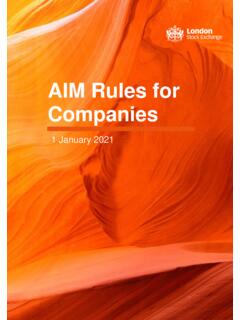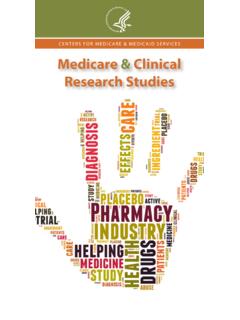Transcription of Adult Immunization Schedule - American Academy of …
1 VACCINE AGE GROUP 19-21 years22-26 years27-49 years50-59 years60-64 years 65 yearsInfluenza 2,*Tetanus, diphtheria, pertussis (Td/Tdap) 3,*Varicella 4,*Human papillomavirus (HPV) Female 5,*Human papillomavirus (HPV) Male 5,*Zoster 6 Measles, mumps, rubella (MMR) 7,*Pneumococcal 13-valent conjugate (PCV13) 8,*Pneumococcal polysaccharide (PPSV23) 9,10 Meningococcal 11,*Hepatitis A 12,*Hepatitis B 13,*Haemophilus influenzae type b (Hib) 14,**Covered by the Vaccine Injury Compensation Program3 doses1 or 3 doses2 doses1 or more doses1 dose1 dose1 or 2 doses1 or 2 doses1 dose3 doses2 dosesSubstitute 1-time dose of Tdap for Td booster; then boost with Td every 10 yrs1 dose annuallyFor all persons in this category who meet the age requirements and who lack documentation of vaccination or have no evidence of previous infection; zoster vaccine recommended regardless of prior episode of zosterRecommended if some other risk factor is present ( , on the basis of medical, occupational, lifestyle, or other indication)No recommendationRecommended Adult Immunization Schedule United States - 2014 Note: These recommendations must be read with the footnotes that followcontaining number of doses, intervals between doses, and other important 1.
2 Recommended Adult Immunization Schedule , by vaccine and age group1 Report all clinically significant postvaccination reactions to the Vaccine Adverse Event Reporting System (VAERS). Reporting forms and instructions on filing a VAERS report are available at or by telephone, on how to file a Vaccine Injury Compensation Program claim is available at or by telephone, 800-338-2382. To file a claim for vaccine injury, contact the Court of Federal Claims, 717 Madison Place, , Washington, 20005; telephone, information about the vaccines in this Schedule , extent of available data, and contraindications for vaccination is also available at or from the CDC-INFO Contact Center at 800-CDC-INFO (800-232-4636) in English and Spanish, 8:00 - 8:00 Eastern Time, Monday - Friday, excluding of trade names and commercial sources is for identification only and does not imply endorsement by the Department of Health and Human recommendations in this Schedule were approved by the Centers for Disease Control and Prevention s (CDC) Advisory Committee on Immunization Practices (ACIP), the American Academy of Family Physicians (AAFP), the American College of Physicians (ACP), American College of Obstetricians and Gynecologists (ACOG) and American College of Nurse-Midwives (ACNM).
3 VACCINE INDICATION PregnancyImmuno-compromisingconditions (excluding human immunodeficiencyvirus [HIV])4,6,7,8,15 HIV infectionCD4+ T lymphocytecount 4,6,7,8,15 Men who have sex with men (MSM)Kidney failure, end-stage renal disease, receipt of hemodialysisHeart disease,chroniclung disease,chronicalcoholismAsplenia (including elective splenectomy and persistent complement componentdeficiencies) 8,14 Chronic liver diseaseDiabetesHealthcarepersonnel< 200cells/ L 200cells/ LInfluenza 2,*Tetanus, diphtheria, pertussis (Td/Tdap) 3,*Varicella 4,*Human papillomavirus (HPV) Female 5,*Human papillomavirus (HPV) Male 5,*Zoster 6 Measles, mumps, rubella (MMR) 7,*Pneumococcal 13-valent conjugate (PCV13) 8,* Pneumococcal polysaccharide (PPSV23) 9,10 Meningococcal 11,*Hepatitis A 12,*Hepatitis B 13,*Haemophilus influenzae type b (Hib) 14,*These schedules indicate the recommended age groups and medical indications for which administration of currently licensed vaccines is commonly indicated for adults ages 19 years and older, as of February 1, 2014.
4 For all vaccines being recommended on the Adult Immunization Schedule : a vaccine series does not need to be restarted, regardless of the time that has elapsed between doses. Licensed combination vaccines may be used whenever any components of the combination are indicated and when the vaccine s other components are not contraindicated. For detailed recommendations on all vaccines, including those used primarily for travelers or that are issued during the year, consult the manufacturers package inserts and the complete statements from the Advisory Committee on Immunization Practices ( ). Use of trade names and commercial sources is for identification only and does not imply endorsement by the Department of Health and Human doses1 or 3 doses2 doses1 or more doses1 dose1 or 2 doses1 or 2 dosesContraindicated1 doseContraindicated3 doses through age 21 yrs3 doses through age 26 yrs3 doses through age 26 yrs3 doses through age 26 yrs2 dosesContraindicatedSubstitute 1-time dose of Tdap for Td booster; then boost with Td every 10 yrs1 dose IIV or LAIV annually1 dose IIV annually1 dose IIV or LAIV annually1 dose Tdap each pregnancy1 dose IIV annuallyFigure 2.
5 Vaccines that might be indicated for adults based on medical and other indications1post-HSCT recipients onlyFor all persons in this category who meet the age requirements and who lack documentation of vaccination or have no evidence of previous infection; zoster vaccine recommended regardless of prior episode of zosterRecommended if some other risk factor is present ( , on the basis of medical, occupational, lifestyle, or other indications)No recommendation*Covered by the Vaccine Injury Compensation Program3 doses1. Additional information Additional guidance for the use of the vaccines described in this supplement is available at Information on vaccination recommendations when vaccination status is unknown and other general Immunization information can be found in the General Recommendations on Immunization at Information on travel vaccine requirements and recommendations ( , for hepatitis A and B, meningococcal, and other vaccines) is available at Additional information and resources regarding vaccination of pregnant women can be found at 2.
6 Influenza vaccination Annual vaccination against influenza is recommended for all persons aged 6 months or older. Persons aged 6 months or older, including pregnant women and persons with hives-only allergy to eggs, can receive the inactivated influenza vaccine (IIV). An age-appropriate IIV formulation should be used. adults aged 18 to 49 years can receive the recombinant influenza vaccine (RIV) (FluBlok). RIV does not contain any egg protein. Healthy, nonpregnant persons aged 2 to 49 years without high-risk medical conditions can receive either intranasally administered live, attenuated influenza vaccine (LAIV) (FluMist), or IIV. Health care personnel who care for severely immunocompromised persons ( , those who require care in a protected environment) should receive IIV or RIV rather than LAIV. The intramuscularly or intradermally administered IIV are options for adults aged 18 to 64 years. adults aged 65 years or older can receive the standard-dose IIV or the high-dose IIV (Fluzone High-Dose).
7 3. Tetanus, diphtheria, and acellular pertussis (Td/Tdap) vaccination Administer 1 dose of Tdap vaccine to pregnant women during each pregnancy (preferred during 27 to 36 weeks gestation) regardless of interval since prior Td or Tdap vaccination. Persons aged 11 years or older who have not received Tdap vaccine or for whom vaccine status is unknown should receive a dose of Tdap followed by tetanus and diphtheria toxoids (Td) booster doses every 10 years thereafter. Tdap can be administered regardless of interval since the most recent tetanus or diphtheria-toxoid containing vaccine. adults with an unknown or incomplete history of completing a 3-dose primary vaccination series with Td-containing vaccines should begin or complete a primary vaccination series including a Tdap dose. For unvaccinated adults , administer the first 2 doses at least 4 weeks apart and the third dose 6 to 12 months after the second.
8 For incompletely vaccinated ( , less than 3 doses) adults , administer remaining doses. Refer to the ACIP statement for recommendations for administering Td/Tdap as prophylaxis in wound management (see footnote 1).4. Varicella vaccination All adults without evidence of immunity to varicella (as defined below) should receive 2 doses of single-antigen varicella vaccine or a second dose if they have received only 1 dose. Vaccination should be emphasized for those who have close contact with persons at high risk for severe disease ( , health care personnel and family contacts of persons with immunocompromising conditions) or are at high risk for exposure or transmission ( , teachers; child care employees; residents and staff members of institutional settings, including correctional institutions; college students; military personnel; adolescents and adults living in households with children; nonpregnant women of childbearing age; and international travelers).
9 Pregnant women should be assessed for evidence of varicella immunity. Women who do not have evidence of immunity should receive the first dose of varicella vaccine upon completion or termination of pregnancy and before discharge from the health care facility . The second dose should be administered 4 to 8 weeks after the first dose. Evidence of immunity to varicella in adults includes any of the following: documentation of 2 doses of varicella vaccine at least 4 weeks apart; before 1980, except health care personnel and pregnant women; history of varicella based on diagnosis or verification of varicella disease by a health care provider ; history of herpes zoster based on diagnosis or verification of herpes zoster disease by a health care provider ; or laboratory evidence of immunity or laboratory confirmation of disease. 5. Human papillomavirus (HPV) vaccination Two vaccines are licensed for use in females, bivalent HPV vaccine (HPV2) and quadrivalent HPV vaccine (HPV4), and one HPV vaccine for use in males (HPV4).
10 For females, either HPV4 or HPV2 is recommended in a 3-dose series for routine vaccination at age 11 or 12 years and for those aged 13 through 26 years, if not previously vaccinated. For males, HPV4 is recommended in a 3-dose series for routine vaccination at age 11 or 12 years and for those aged 13 through 21 years, if not previously vaccinated. Males aged 22 through 26 years may be vaccinated. 5. Human papillomavirus (HPV) vaccination (cont d) HPV4 is recommended for men who have sex with men through age 26 years for those who did not get any or all doses when they were younger. Vaccination is recommended for immunocompromised persons (including those with HIV infection) through age 26 years for those who did not get any or all doses when they were younger. A complete series for either HPV4 or HPV2 consists of 3 doses. The second dose should be administered 4 to 8 weeks (minimum interval of 4 weeks) after the first dose; the third dose should be administered 24 weeks after the first dose and 16 weeks after the second dose (minimum interval of at least 12 weeks).










